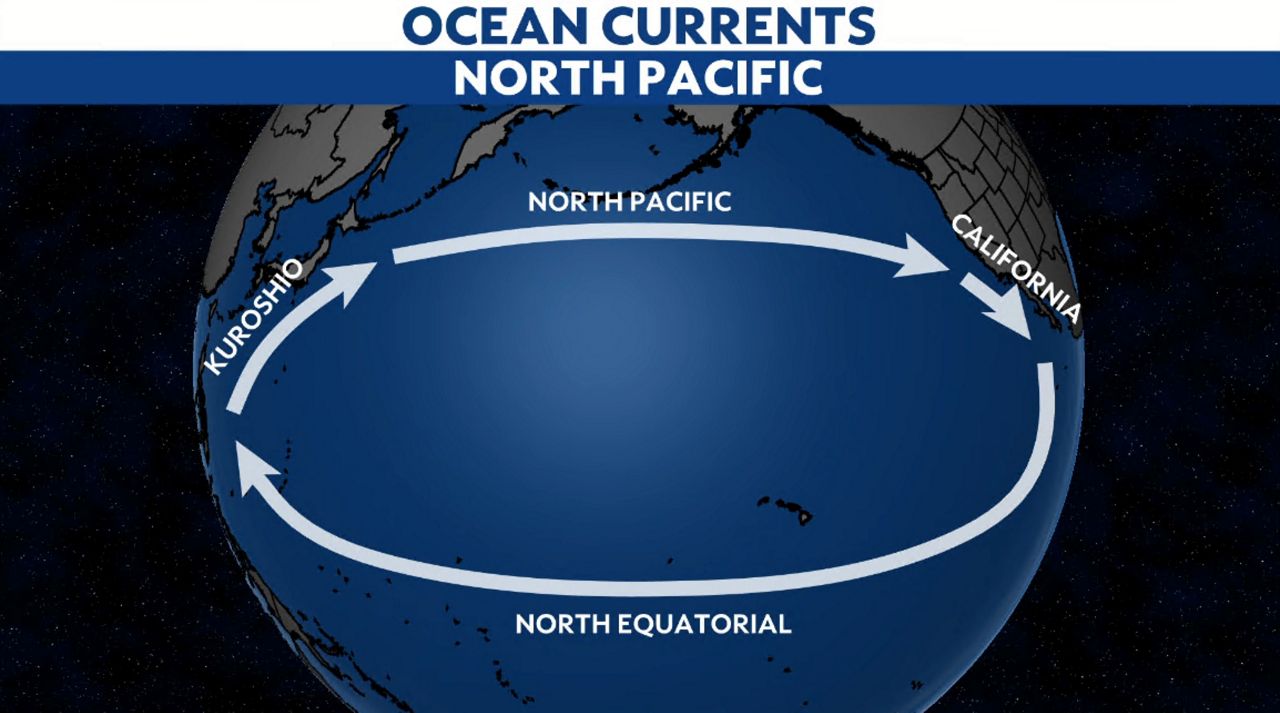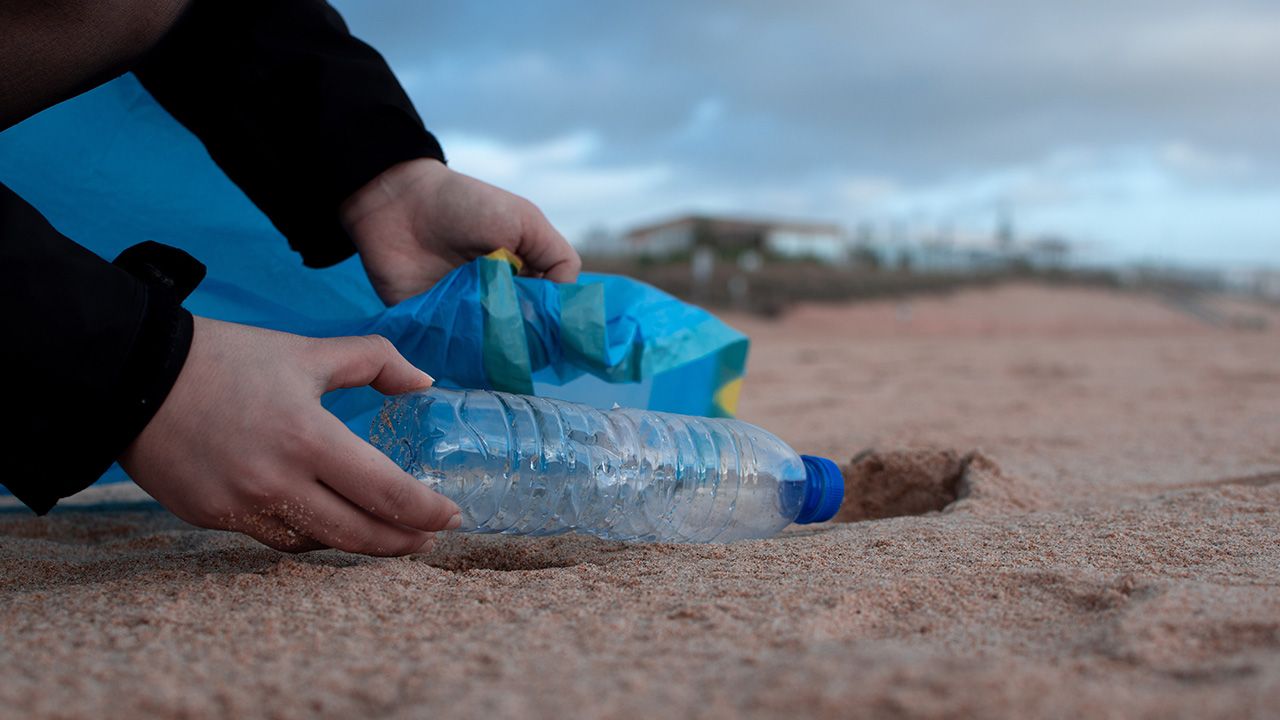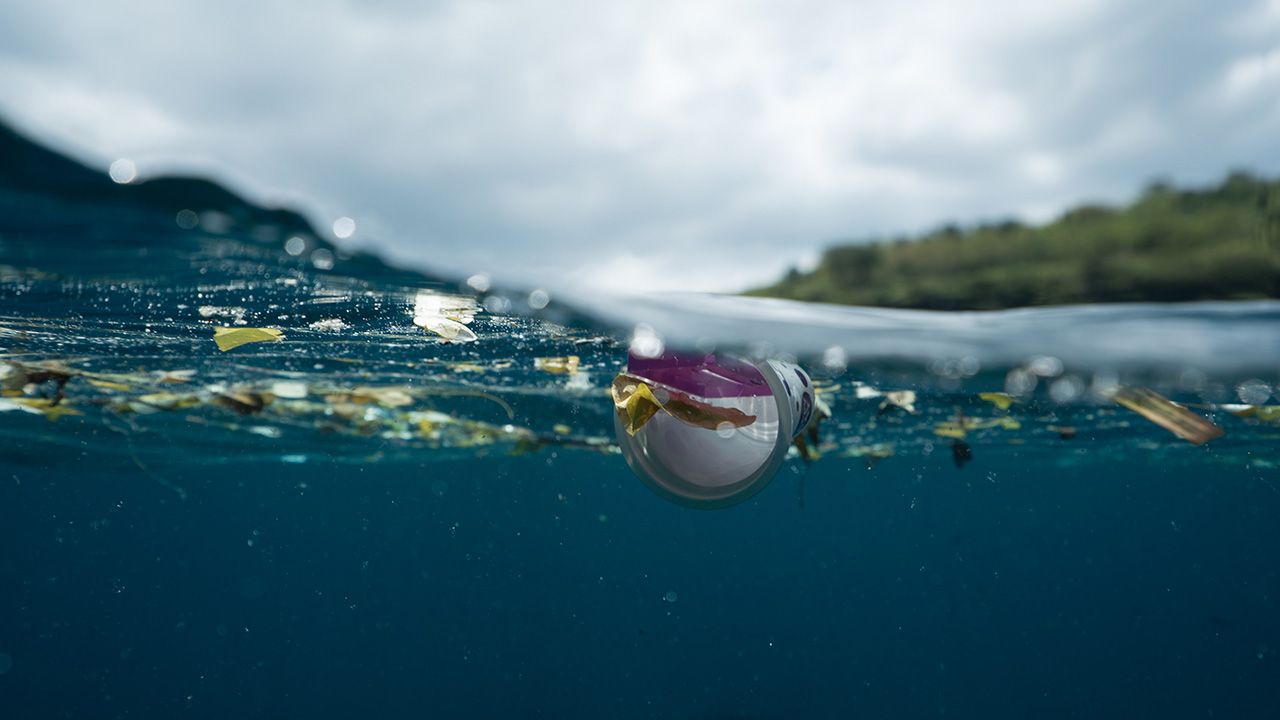Water covers about 71% of Earth, and most of the pollution in it comes from the remaining 29% of land we live on.
NOAA states that “80% of pollution to the marine environment comes from the land,” and it’s not just from humans throwing away trash.
A big source of the pollution comes from runoff, which is called nonpoint source pollution. When water flows back into rivers and oceans, it can take harmful substances from septic tanks, vehicles, boats, forests and farms.
Oil spills and industrial discharge, called point source pollution, can also pollute our waters.
Air pollution can even turn into ocean pollution when it settles into bodies of water.
Winds help form large systems of circular ocean currents called gyres. There’s one in the Indian Ocean, two in the Atlantic and two in the Pacific.
These currents help pull in garbage, and since the area between the currents does not flow as much, garbage gets trapped here.

According to a scientific study from 2018, the Pacific Ocean’s garbage patch is the biggest, coming in at almost 618,000 square miles.
It contains tons of non-biodegradable plastics, from plastic bottles to bags to microplastics.
Not only does the garbage pollute the surface of the ocean, but it also sinks down to the ocean floor, polluting more of the ocean and becoming food for marine wildlife.
Most of it is extremely hard to clean, especially microplastics, since you can't see it with the naked eye.
In the ocean, pollutants can destroy habitats and kill many animals.
For us, the debris can make navigation difficult, and any sea life that consumes dangerous contaminants can end up in our bodies when we eat seafood.
Pollution can also lead to more waterborne diseases and toxic algal blooms that can harm us.

Cleaning up our oceans is a worldwide effort, and there are several things you can start today to help.
First, reduce the amount of waste you throw away. Opt for a reusable bag or container.
Carpool or ride a bike to cut back on vehicle pollution.
Lower your water usage to help with runoff, and volunteer for cleanup programs if you can.
Our team of meteorologists dives deep into the science of weather and breaks down timely weather data and information. To view more weather and climate stories, check out our weather blogs section.



